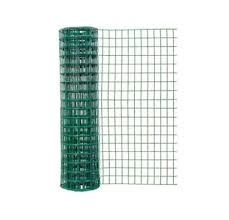marras . 08, 2024 09:49 Back to list
Choosing the Right Field Wire Fencing for Your Agricultural Needs
Field Wire Fencing A Comprehensive Overview
Field wire fencing, commonly known as agricultural wire fencing, serves as one of the most versatile and durable solutions for enclosing fields, pastures, and properties. This type of fencing is primarily constructed with strong and durable wire that is designed to withstand various environmental conditions while providing reliable boundaries for livestock and crops. In this article, we will explore the key aspects of field wire fencing, its benefits, installation processes, and maintenance tips.
What is Field Wire Fencing?
Field wire fencing typically consists of vertical and horizontal wires created into a grid pattern. The wires are galvanized or coated to resist rust and corrosion, thereby extending the fence's longevity. Various designs exist, including barbed wire, woven wire, and high-tensile wire, each suited to specific needs and types of livestock. For instance, woven wire fencing is ideal for smaller animals, such as sheep and goats, while barbed wire is often used for larger livestock, like cattle.
Benefits of Field Wire Fencing
1. Durability One of the most significant advantages of field wire fencing is its durability. When properly installed and maintained, a wire fence can last for years, making it a cost-effective solution for landowners.
2. Security Field wire fencing provides an excellent barrier against intruders, both human and animal. The robust materials used in its construction deter unwanted access, ensuring the safety of livestock and crops.
3. Versatility Field wire fencing can be tailored to suit various agricultural needs. Whether it is intended for containing livestock, protecting gardens, or delineating property boundaries, wire fencing can be adjusted in height and design to meet specific requirements.
4. Low Maintenance Once installed, wire fences require minimal upkeep. Regular inspections for damage and occasional tightening of wires are usually all that is necessary to keep the fence in good condition.
5. Cost-Effective Compared to other fencing materials, field wire fencing is often more affordable. The materials are generally inexpensive, and the installation process typically requires fewer labor hours due to the straightforward nature of the project.
Installation Process
Installing field wire fencing involves several steps that ensure a secure and effective barrier
. Here’s a brief overview of the installation processfield wire fencing

1. Planning Before installation, clearly outline the area to be fenced. Determine the type of fence needed based on the animals you wish to contain and the specific conditions of your property.
2. Gathering Materials Acquire all necessary materials, including wire, posts, and fencing tools. Common posts include wooden, metal, or vinyl options, each providing different benefits.
3. Post Installation Set the posts at designated intervals, typically between 8 to 12 feet apart, depending on the type of fence being installed. Ensure that the posts are sturdy and deeply set in the ground for stability.
4. Attaching the Wire Once the posts are in place, begin attaching the wire to the posts, starting at one end and working toward the other. Use staples or clips to secure the wire firmly to each post while maintaining the proper tension.
5. Finishing Touches After attaching all sections of wire, inspect the entire fence for any sagging or weak points. Make necessary adjustments and check that gates, if included, function seamlessly.
Maintenance Tips
Regular maintenance is essential for ensuring longevity in field wire fencing. Here are some tips
1. Visual Inspections Periodically check the fence for signs of damage, loose wires, or corrosion. Promptly address any issues to prevent further deterioration.
2. Tension Checks Ensure that wires remain taut over time. Re-tighten loose sections to maintain the effectiveness of the fence.
3. Clean-Up Keep the area surrounding the fence clear of debris, tall weeds, or brush that could potentially damage the wire or compromise the fence's integrity.
4. Animal Checks Regularly monitor livestock to ensure they do not damage the fence through pushing or rubbing. Address any behavioral issues that may lead to repeated damage.
In conclusion, field wire fencing provides an effective solution for agricultural needs, combining durability, security, and cost-effectiveness. With proper installation and maintenance, wire fencing can serve as a reliable boundary for many years, ensuring the safety and productivity of your livestock and crops.
-
Weather Resistance Properties of Quality Roofing Nails
NewsAug.01,2025
-
How Galvanised Iron Mesh Resists Corrosion in Harsh Environments
NewsAug.01,2025
-
Creative Landscaping Uses for PVC Coated Wire Mesh Panels
NewsAug.01,2025
-
Common Wire Nail Dimensions and Their Specific Applications
NewsAug.01,2025
-
Choosing the Right Welded Wire Sheets for Agricultural Fencing
NewsAug.01,2025
-
Anti - Climbing Features of Razor Wire Barriers
NewsAug.01,2025









